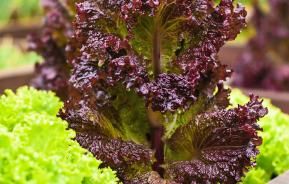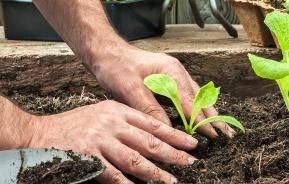You either love them or hate them, but capers are those small, green ‘berries’ that usually come pickled in jars or packed in salt. But capers aren’t a berry, they are unopened flower buds. The flowers are extremely ornamental.
Most people who hate capers do so because of the pickling process or the excess salt. They have a totally different taste when eaten fresh. Their sharp, piquant flavour is an essential ingredient in Mediterranean dishes and numerous fish dishes.
The seedpods of nasturtiums look very similar to capers and taste similar too. They are often called ‘poor man’s capers’.
How to grow capers
The caper plant is a half-hardy, deciduous shrub. It needs a sunny position with at least 6 hours of sun per day in summer. It needs a minimum temperature of 10°C (50°F) and is best grown in a greenhouse or well-lit conservatory. Although it can tolerate lower temperatures if the compost is kept on the dry side.
Caper varieties
Capparis spinosa var. inermis is the variety bred for cooking. Seed is available from Chiltern Seeds.
Sowing capers
Prior to sowing the seeds, soak them for 2 to 3 days in warm water. Sow from late winter to the end of spring in pots of good, moist but well-drained seed compost at a temperature of 18-21°C (65-70°F), ideally in a heated propagator.
When growing capers from seed, germination can take a long time. If germination hasn’t occurred within 2 to 3 months, the seeds will need a period of cold stratification. Either move the pots outside over winter for a period or natural cold, or move them to a fridge, for 7 to 10 days. Then put them back in the propagator. These alternating periods of cold/warmth should ensure germination.
When the seedlings are large enough to handle, transplant them individually to 7.5-9cm (3-3.5in) pots and grow on the plants at a minimum temperature of 10°C.

Planting capers
Pot on the plants into the next size pot, as and when they need it, until they are growing in one measuring 38-45cm (15-18in) wide. Use a John Innes compost or multipurpose compost with added John Innes.
How to care for capers
Keep the compost moist while plants are actively growing (spring to autumn), but keep it slightly drier at other times. Caper plants are very susceptible to waterlogging, so don’t overwater.
Feed plants regularly with a high potash liquid plant food from spring to autumn.
Pruning capers
Cut back plants hard, to a couple of inches from ground level in winter or early spring, to make a more compact plant and to encourage lots of new flowering shoots.
How to harvest capers
You should be able to pick capers from May to September, from the third year onwards after sowing from seed.
Harvest the flower buds when they are still tight. This usually means picking them early in the morning before they start to open in the heat of the day.
| Flowering season(s) | Summer, Autumn |
|---|---|
| Foliage season(s) | Spring, Summer, Autumn |
| Sunlight | Full sun |
| Soil type | Loamy |
| Soil pH | Neutral |
| Soil moisture | Moist but well-drained |
| Ultimate height | 1m (40in) |
| Ultimate spread | Up to 1.5m (5ft) |
| Time to ultimate height | 3-4 years |








